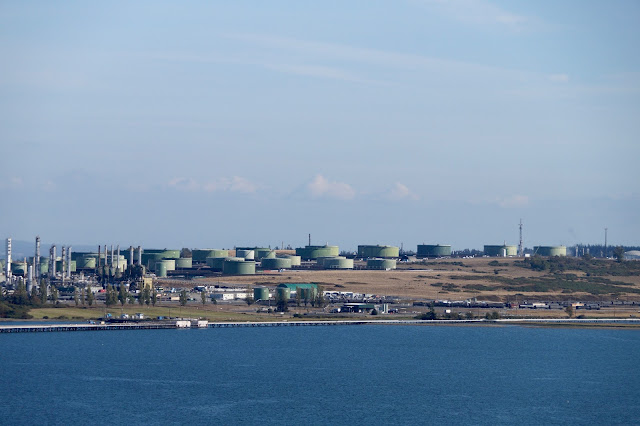The name Deception Pass conjures mysterious and rocky
images. Indeed the pass between Fidalgo and Whidbey Islands is narrow and bound
by high cliffs.
In 1792 Captain George Vancouver explored this area and
thought it was a peninsula. Upon finding this intricate channel he felt he had
been deceived, hence the name Deception Passage.
By the 1890s Fidalgo Island had a bridge to the mainland. This
is the current bridge.
From the 1890s Whidbey Islanders lobbied for a bridge to
Fidalgo Island. By 1924 an erratic ferry service was available. After years of
broken promises and two vetoes, construction of the bridge began in 1934. It was
completed in 1935 and now roughly 15,000 cars cross the bridge each day.
From Anacortes we took the ferry to Friday Harbor on San
Juan Island.
Cormorants were preening to dry their wings. They have less
preen oil than other birds, so their feathers can get soaked rather than
shedding water like a duck’s.
Finally one bird was ready to fly.
On a beautiful, sunny day we arrived in Friday Harbor.
We promptly took local transit to Roche Harbor on the northwest tip of the island.
In 1846 the Treaty of Oregon set the boundary between
Britain and the US as the 49th parallel.
From 1859 to 1872 the British and U.S. occupied San Juan
Island both laying claim to the Islands due to unclear wording of the treaty.
San Juan Island was peacefully occupied by troops from both
countries. British troops built lime kilns to process the vast lime deposits on
the island.
A black tail deer kept on eye on us as we waited for the bus
back to Friday Harbor.
From the top floor of a restaurant we enjoyed the view
over Friday Harbor.
Sue and Bob headed home two days before us so we wandered around
Anacortes again. This ferry was in dry dock and we had an opportunity to view a
ferry from below.
The next day I took one more photo of Mt. Baker at sunrise before we headed home.



























































